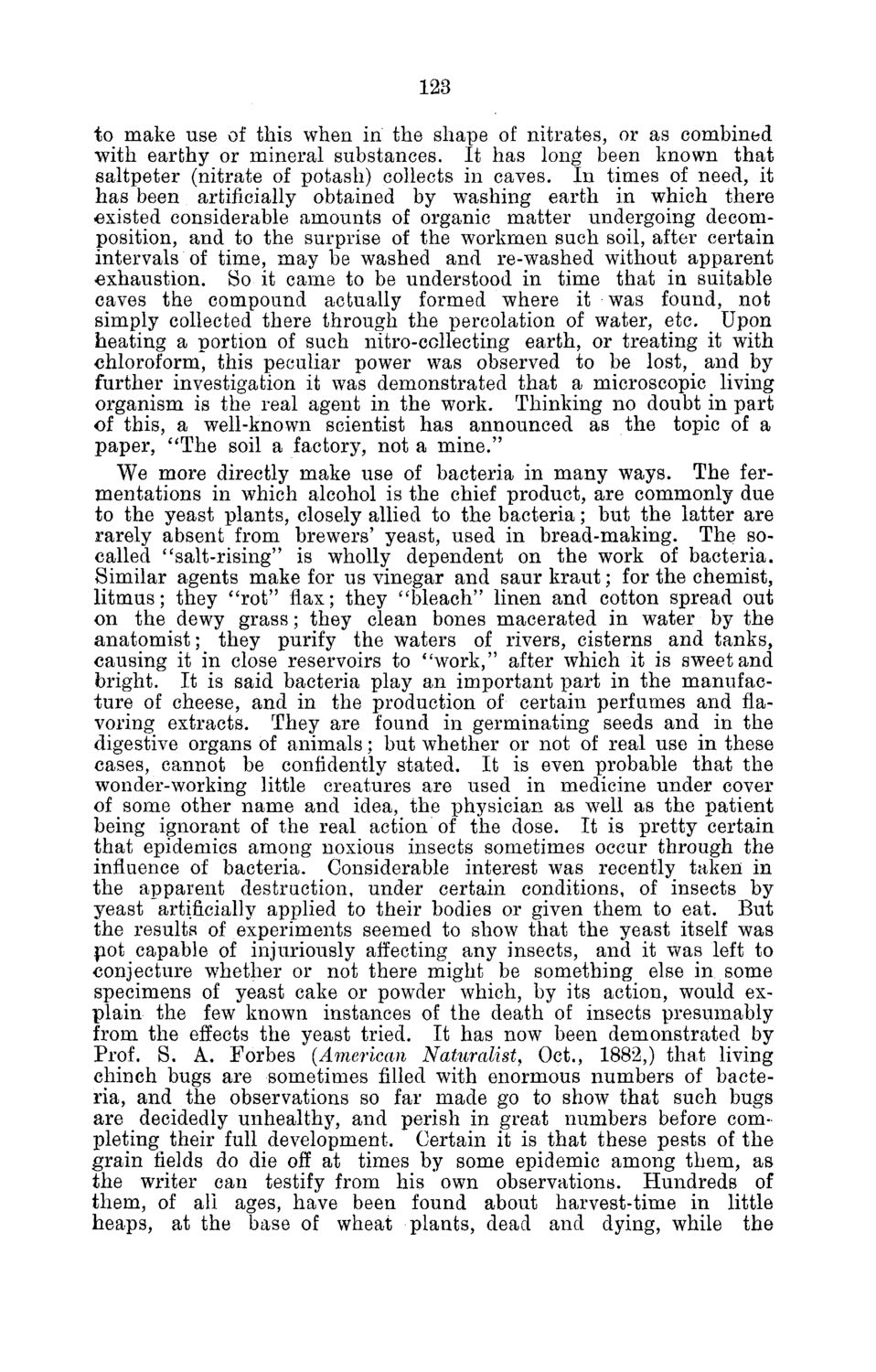| |
| |
Caption: Board of Trustees Minutes - 1882
This is a reduced-resolution page image for fast online browsing.

EXTRACTED TEXT FROM PAGE:
123 to make use of this when in the shape of nitrates, or as combined with earthy or mineral substances. It has long been known that saltpeter (nitrate of potash) collects in caves. In times of need, it has been artificially obtained by washing earth in which there existed considerable amounts of organic matter undergoing decomposition, and to the surprise of the workmen such soil, after certain intervals of time, may be washed and re-washed without apparent exhaustion. So it came to be understood in time that in suitable caves the compound actually formed where it was found, not simply collected there through the percolation of water, etc. Upon heating a portion of such nitro-collecting earth, or treating it with ohloroform, this peculiar power was observed to be lost, and by further investigation it was demonstrated that a microscopic living organism is the real agent in the work. Thinking no doubt in part of this, a well-known scientist has announced as the topic of a paper, "The soil a factory, not a mine." We more directly make use of bacteria in many ways. The fermentations in which alcohol is the chief product, are commonly due to the yeast plants, closely allied to the bacteria; but the latter are rarely absent from brewers' yeast, used in bread-making. The socalled "salt-rising" is wholly dependent on the work of bacteria. Similar agents make for us vinegar and saur kraut; for the chemist, litmus; they "rot" flax; they "bleach" linen and cotton spread out on the dewy grass; they clean bones macerated in water by the anatomist; they purify the waters of rivers, cisterns and tanks, causing it in close reservoirs to "work," after which it is sweet and bright. It is said bacteria play an important part in the manufacture of cheese, and in the production of certain perfumes and flavoring extracts. They are found in germinating seeds and in the digestive organs of animals; but whether or not of real use in these cases, cannot be confidently stated. It is even probable that the wonder-working little creatures are used in medicine under cover of some other name and idea, the physician as well as the patient being ignorant of the real action of the dose. It is pretty certain that epidemics among noxious insects sometimes occur through the influence of bacteria. Considerable interest was recently taken in the apparent destruction, under certain conditions, of insects by yeast artificially applied to their bodies or given them to eat. But the results of experiments seemed to show that the yeast itself was not capable of injuriously affecting any insects, and it was left to conjecture whether or not there might be something else in some specimens of yeast cake or powder which, by its action, would explain the few known instances of the death of insects presumably from the effects the yeast tried. It has now been demonstrated by Prof. S. A. Forbes (American Naturalist, Oct., 1882,) that living chinch bugs are sometimes filled with enormous numbers of bacteria, and the observations so far made go to show that such bugs are decidedly unhealthy, and perish in great numbers before completing their full development. Certain it is that these pests of the grain fields do die off at times by some epidemic among them, as the writer can testify from his own observations. Hundreds of them, of all ages, have been found about harvest-time in little heaps, at the base of wheat plants, dead and dying, while the
| |